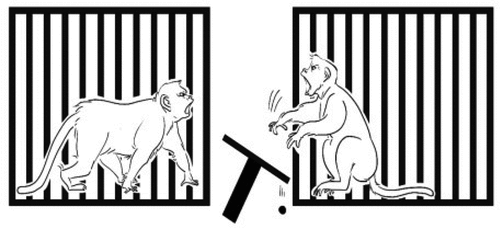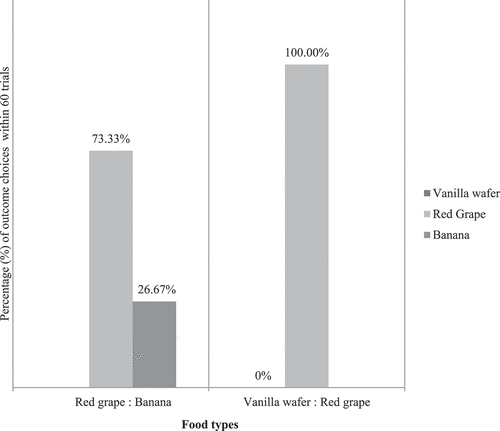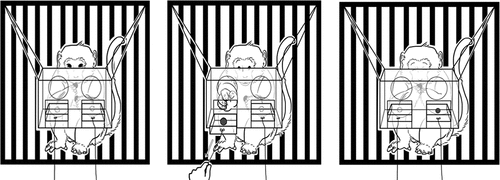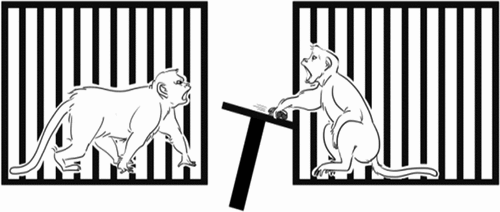Figures & data
Figure 1. The aversion mechanism was predicted by preferences. The hypothesis was the highest preference level of outcome types would produce both equity and disadvantageous inequity aversion, but the lowest preference level of outcome types would produce no aversion.

Figure 3. Aversion test. Pairs of a monkey got red grape distributions between them with 1:1, 0:2 or 2:0, and 1:3 or 3:1 ratios.

Table 1. Aversion test stimulus procedure
Figure 4. Avoidance. A monkey did not take the food but throwing the tray to maximize its rejection.

Figure 6. Percentage (%) of outcome choices between vanilla wafer, red grape, and banana within 60 trials (10 × 6 subjects). These outcome type preference test results show that the red grape was the absolute preferred outcome (100%) compared to the vanilla wafer (0%) and it was still a higher preferred outcome (73.33%) compared to the banana (26.67%).

Table 2. The number of food intakes per monkey per trial in a pair (10 trials per pair × 6 pairs) to 1:1 ratio (equity condition)
Table 3. The number of food intakes per monkey per trial in a pair (10 trials per pair × 6 pairs) to 0:2 ratio (inequity condition)
Table 4. The number of food intakes per monkey per trial in a pair (10 trials per pair × 6 pairs) to 1:3 ratio (inequity condition)
Table 5. Acceptance vs Aversion to equity (1:1 ratio) and inequity condition (0:2 and 1:3 ratio) per pair in 10 trials
Data availability statement
The authors confirm that the data supporting the findings of this study were available within the article and its supplementary material.


